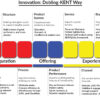
Introduction
HSBC recently published a report, titled “Affluent Investors Snapshot 2025,” that has caused a stir among India’s personal finance as well as the investment space. Indians, according to the report, now must save around ₹3.5 crore or about USD 401,000 for a secure, comfortable retirement. It is a significantly altered benchmark from ones before it and is being driven on by shifting macroeconomic realities such as rising longevity, increased inflation, and dreams of lifestyles. As India moves on from the customary system of providing for joint families to more urban, nuclear, and self-sufficient living, financial independence at retirement has become mandatory.
This post analyzes the report’s key findings and their impact through the lenses of personal finance, inflation dynamics, and long-term economic planning.
1. The ₹3.5 Crore Target: It’s Not as Far Away as It Seems
At first, ₹3.5 crore may sound like an overwhelming amount. But over a 30- to 35-year-long professional life, it translates into a long-term systematic savings and investments endeavour that you can accomplish through planning as well as self-discipline.
For instance, based on an average 8% inflation-adjusted annual return on equity-linked investments and 30-year duration of savings, an investor must save approximately ₹15,000 to ₹18,000 per month from the 30th year of age onwards. It may sound steep, but becomes feasible when added to employer contributions to pensions, pay increases, and prudent investments such as SIPs of mutual funds and NPS (National Pension System).
2. The Rising Cost of Living and Longevity Risks
One of the key points of the HSBC report has to do with rising awareness on the part of Indian investors of rising cost-of-living expenses. India’s urban Consumer Price Index (CPI) inflation has averaged 5–6% annually over the last decade. Food and fuel prices always make the headlines, but main drivers of inflation such as healthcare, education, and urban housing keep climbing steadily.
Moreover, as longevity rises—now 70 years, soon to go even higher—post-retirement corpus accumulation must extend well into individuals’ 80s or 90s at the very least. The retiree of 60 years that we have today could live another 30 years without salary, which only bodes towards a robust retirement corpus as a requirement.
Key Statistics:
- Life expectancy (India): ≈ 70 years (2024), projected to pass 75 by 2050.
- Healthcare inflation: 10–14% annual forecasts from private sector .
- Urban housing inflation: 6-9% annually in tier-1 cities.
3. Changing Social Systems: The Dissolution of the Joint Family Pension System
Earlier, Indian retirees relied heavily on family support or government pensions. But such protection nets are vanishing. As people migrate to urban locations, as fertility falls, as well as as more women enter the workforce, the system of the joint family structure immediately unravels.
Moreover, government pensions are offered to just a decreasing percentage of the population—mostly public sector retirees. The private sector has company NPS as well as EPF (Employee Provident Fund), but both of them require continuous as well as proactive payments to amass sizable sums.
This change calls for personal responsibility when preparing for retirement. The HSBC report reveals such change, recording a notable growth of investor-led planning for retirement, especially among high-income urban families.
4. Inflation-Proofing Retirement: The New Financial Imperative
Slowly but steadily, Indian high-income as well as middle-income investors are realizing that conventional insurance-linked pension options as well as fixed deposits may not fare too well in a high-inflation economy. Genuine real returns (i.e., returns on conventional instruments such as FDs or PPF, corrected for inflation) are often negative or, at best, modest.
HSBC studies state that there has been a trend among young investors for diversified portfolios—a combination of equities, debt, real estate, gold, and foreign assets. instruments such as SIPs on index funds, ETFs, REITs, and annuity plans are gaining popularity as part of retirement planning.
Strategic Considerations
Diversification: Combining equity and debt mutual funds might iron out volatility while maximizing growth.
Inflation-indexed securities: Consider bonds or annuities whose payments change based on inflation.
Property & REITs: As property markets of cities gain momentum, lease yields act as an inflation hedge.
Healthcare corpus: Create a special Mediclaim fund or purchase senior citizen health insurance policies.
5. Policy Support and Financial Literacy
The Indian regulatory system has enhanced to enable long-term retirement planning. The National Pension System (NPS), Atal Pension Yojana (APY), and initiative by SEBI and IRDAI are designed toward building long-term disciplined investments. But still, awareness lacks.
In the case of the HSBC report, only 40% of the wealthy investors surveyed indicated that they felt secure about having an idea of how much they needed to retire. This calls for greater efforts at financial literacy, employer-provided retirement seminars, availability of robo-advisors, as well as certified planners.
Final thoughts: The ₹3.5 Crore Wake-Up Call
The ₹3.5 crore retirement corpus that has been proposed by HSBC’s Affluent Investors Snapshot 2025 is greater than a number—not just a number, but a wake-up call for salaried, self-employed, as well as entrepreneurial India’s workforce. As purchasing power becomes diluted by inflation as well as poor safety nets, financial independence at retirement has become a vital goal. The key to a secure post-retirement life lies not in panic but planning—timely, informed, and long-term planning. Through SIPs, diversified portfolios, or retirement-specific funds, the mantra remains one: start now, stay disciplined, and future-proof your money.
Dr. Prahlada N.B
MBBS (JJMMC), MS (PGIMER, Chandigarh).
MBA in Healthcare & Hospital Management (BITS, Pilani),
Postgraduate Certificate in Technology Leadership and Innovation (MIT, USA)
Executive Programme in Strategic Management (IIM, Lucknow)
Senior Management Programme in Healthcare Management (IIM, Kozhikode)
Advanced Certificate in AI for Digital Health and Imaging Program (IISc, Bengaluru).
Senior Professor and former Head,
Department of ENT-Head & Neck Surgery, Skull Base Surgery, Cochlear Implant Surgery.
Basaveshwara Medical College & Hospital, Chitradurga, Karnataka, India.
My Vision: I don’t want to be a genius. I want to be a person with a bundle of experience.
My Mission: Help others achieve their life’s objectives in my presence or absence!
My Values: Creating value for others.
References:
- HSBC. Affluent Investors Snapshot 2025. HSBC Global Private Banking.
- Reserve Bank of India. Monetary Policy Report – April 2024.
- National Statistical Office (India). Consumer Price Index Annual Report 2023–24.
- World Bank. India Life Expectancy Data (2023).
- SEBI & IRDAI Circulars on retirement and pension products (2022–2024).

















Dear Dr. Prahlada N.B Sir,
Your article on retirement planning resonated deeply with me. The idea of needing ₹3.5 crore for a secure retirement is a wake-up call for many Indians. I appreciate how you've broken down the strategies to achieve this target into systematic investments, diversification, inflation-proofing, and healthcare planning.
*Key Strategies for Retirement Planning:*
– *Systematic Investments*: Allocate a portion of income to equity-linked investments, debt mutual funds, or retirement-specific funds.
– *Diversification*: Spread investments across asset classes like real estate, gold, and foreign assets to mitigate risks and maximize growth.
– *Inflation-Proofing*: Incorporate inflation-indexed securities or annuities to safeguard purchasing power.
– *Healthcare Planning*: Create a dedicated healthcare fund or purchase senior citizen health insurance policies.
Your dedication to creating value for others is truly commendable. Your vision of accumulating experience rather than seeking genius is inspiring, and your mission to help others achieve their life objectives is a testament to your character.
Reply[…] am writiing this blog as a follow-up to my earlier blog, “Why ₹3.5 Crore May Become the New Definition of Retirement for Indians,” published on 05 August […]
Reply